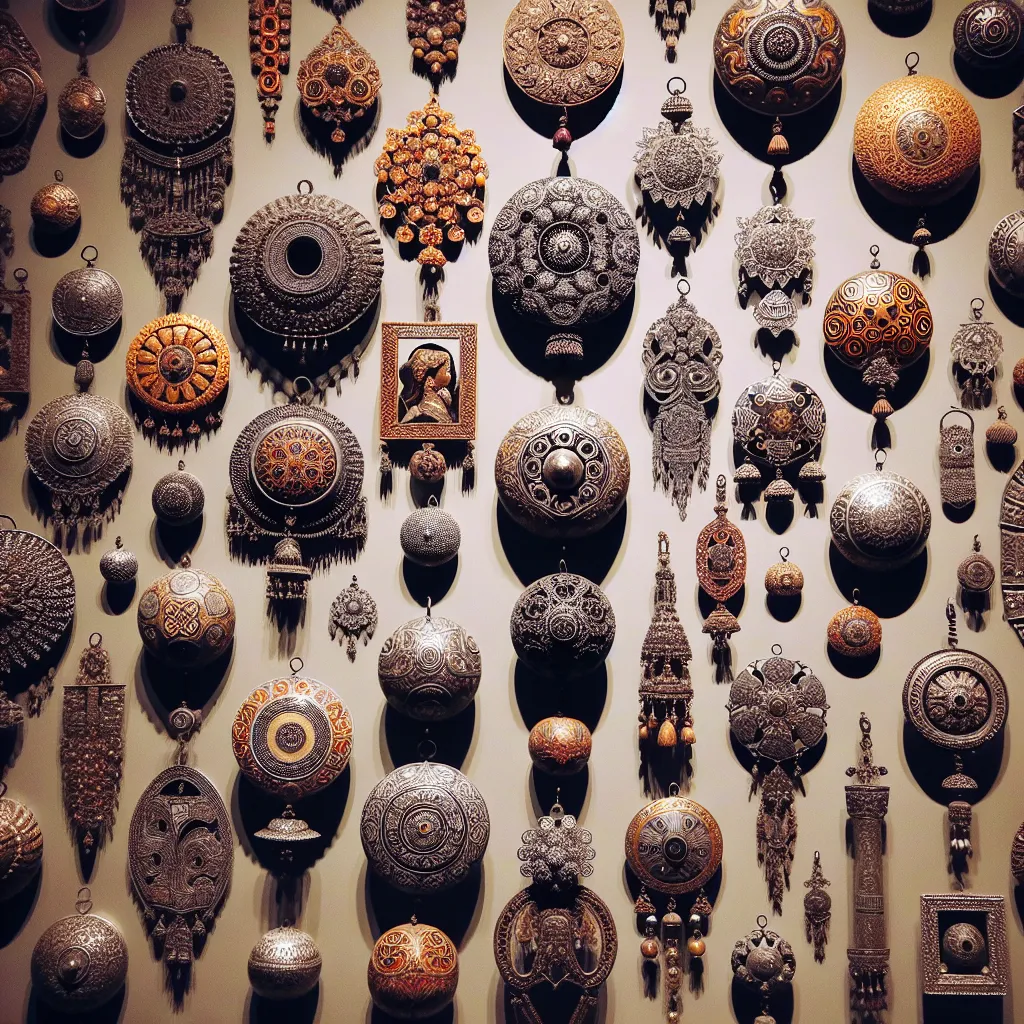The Early Beginnings of Ornaments: Ancient Cultures and Traditions
When exploring the history of ornaments, it’s essential to delve into the early beginnings of ornaments in ancient cultures and traditions. The use of ornaments dates back to prehistoric times when early humans adorned themselves with materials such as feathers, bones, and shells. These early ornaments were not only decorative but also held symbolic and cultural significance within their respective communities.
Ancient Egyptians were one of the most notable civilizations that placed great importance on ornaments. They wore amulets, jewelry, and intricate headdresses, believing that these ornaments had protective and magical properties. Similarly, the ancient Greeks and Romans crafted beautiful ornaments, including intricate brooches, earrings, and decorative hairpins, displaying their craftsmanship and artistic prowess.
Across the globe, in ancient China, ornaments were deeply intertwined with religious and spiritual beliefs. Jade ornaments, in particular, held immense significance and were believed to represent virtue, morality, and immortality. Meanwhile, in India, the tradition of adorning oneself with elaborate ornaments has been an integral part of everyday life and cultural events for centuries.
Native American tribes also had rich ornamentation traditions, creating stunning jewelry pieces using materials found in their natural surroundings, such as turquoise, silver, and shells. These ornaments often depicted symbols of nature, animals, and spiritual beliefs, showcasing the interconnectedness between their culture and the natural world.
From the ancient civilizations to indigenous cultures, the early beginnings of ornaments reveal their profound cultural, spiritual, and symbolic significance, laying the foundation for the diverse and exquisite ornaments that are cherished in modern times.
Evolution of Ornaments in Medieval Europe
During the Middle Ages, ornaments played a significant role in the visual culture of Europe. The evolution of ornaments in Medieval Europe can be traced back to the influence of the Romanesque and Gothic styles. Initially, ornaments were characterized by simple geometric patterns, such as Greek key motifs and interlaced designs. These motifs were often engraved or painted on various objects, including manuscripts, metalwork, and architecture.
As the Medieval period progressed, the ornamentation became increasingly intricate and elaborate. The development of ornate stone carvings on cathedrals and churches showcased the artisans’ mastery in creating foliage motifs, intricate tracery, and symbolic elements such as the fleur-de-lis. Additionally, illuminated manuscripts became adorned with colorful and detailed ornaments, incorporating floral patterns, animal motifs, and mythological creatures.
The rise of guilds and trade routes facilitated the exchange of ornamental ideas and techniques across Europe, leading to the diversification of styles and motifs. The use of ornaments expanded beyond religious settings, influencing the decoration of everyday objects, textiles, and clothing.
By the late Medieval period, the Renaissance influence ushered in a revival of classical ornamentation, characterized by a renewed interest in symmetry, proportion, and naturalistic forms. This era witnessed the integration of ornamental elements in painting, sculpture, and architecture, marking a transition towards the ornamental styles of the early modern period.
In conclusion, the evolution of ornaments in Medieval Europe reflects a rich tapestry of cultural, artistic, and technical advancements. The intricate and diverse ornamentation of this era continues to inspire contemporary design and decorative arts, underscoring its enduring legacy in the history of visual culture.
The Influence of Ornaments in Renaissance Art and Design
The influence of ornaments in Renaissance art and design was profound, reflecting the cultural and artistic values of the time. Ornamentation played a crucial role in the visual language of the period, encompassing a wide range of motifs and decorative elements. During the Renaissance, there was a renewed interest in the classical world, and this was reflected in the use of ornamentation. Artists and designers drew inspiration from ancient Roman and Greek motifs, incorporating intricate patterns, geometric shapes, and botanical forms into their work.
Ornaments were prominently featured in various aspects of Renaissance art and design, including architecture, painting, sculpture, and decorative arts. In architecture, ornamental details such as columns, cornices, and friezes were embellished with elaborate carvings and reliefs, showcasing the skill and craftsmanship of the artisans. In painting, ornamental motifs adorned the borders of religious and secular artworks, adding richness and elegance to the compositions. Moreover, decorative arts such as tapestries, furniture, and metalwork were adorned with ornate designs, reflecting the opulence and sophistication of the period.
Ornaments not only served an aesthetic purpose but also conveyed symbolic meanings and cultural narratives. For example, motifs such as acanthus leaves, arabesques, and grotesques were imbued with allegorical significance, representing themes of nature, mythology, and human experience. The use of ornaments in Renaissance art and design was a way to communicate social status, religious beliefs, and artistic ideals, creating a visual language that transcended time and space.
Furthermore, the exploration of perspective and spatial representation in Renaissance art influenced the way ornaments were integrated into compositions, leading to a harmonious balance between decorative elements and pictorial space. This architectural and pictorial unity contributed to the overall visual impact of artworks, creating a sense of grandeur and coherence.
In conclusion, the influence of ornaments in Renaissance art and design was multifaceted, encompassing stylistic, symbolic, and cultural dimensions. The use of ornaments reflected the artistic achievements of the period, leaving a lasting legacy that continues to inspire contemporary art and design practices.
Modern Interpretations and Trends in Ornamentation
When it comes to the history of ornaments, the modern interpretations and trends in ornamentation have seen a remarkable evolution. While ancient ornaments were primarily made from natural materials like shells, bones, and feathers, modern ornamentation has embraced a wide range of materials and styles. One notable trend in modern ornamentation is the fusion of traditional and contemporary designs, creating a unique blend of historical significance and modern aesthetics.
In recent years, there has been a resurgence of interest in minimalist and sustainable ornamentation. This trend reflects a growing awareness of the environmental impact of mass production and a shift towards more conscious consumption. As a result, modern ornaments are increasingly being crafted from eco-friendly materials and feature sleek, understated designs that exude elegance and simplicity.
Furthermore, the use of technology has revolutionized ornamentation, giving rise to innovative forms and interactive designs. From 3D-printed ornaments to LED-infused decorations, technology has opened up new possibilities for creative expression in ornamentation. This intersection of technology and ornamentation reflects the contemporary fascination with merging artistic traditions with cutting-edge techniques.
In the realm of fashion and interior design, there has been a growing emphasis on personalization and individuality in ornamentation. Customizable ornaments that allow individuals to express their unique style and personality are gaining popularity. This trend signifies a departure from mass-produced, uniform ornaments towards a more bespoke approach that celebrates individual creativity and self-expression.
In conclusion, the modern interpretations and trends in ornamentation showcase a dynamic blend of tradition, innovation, and individuality. From sustainability and technological integration to personalized design, modern ornamentation continues to push the boundaries of creativity and craftsmanship.

